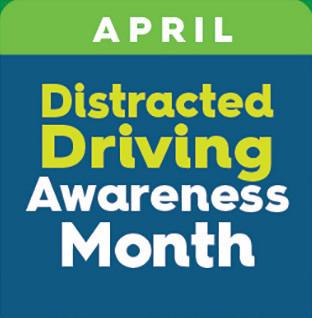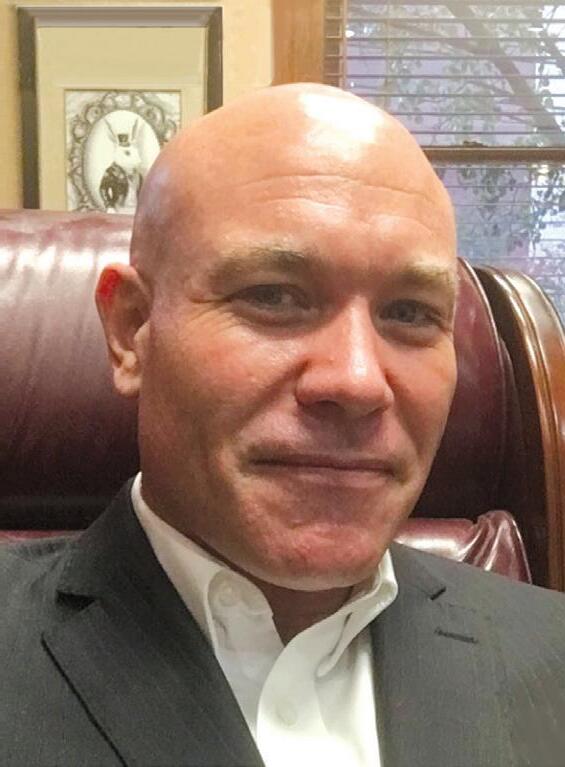
4 minute read
SO LONG COVID
My daughter, Rhonda, has had COVID four times. Although she is a survivor, she continues to deal with the aftermath of her disease. Rhonda has long COVID. So very long.
Her first bout with the deadly virus was in March of 2020, just when it was being recognized as a pandemic, but well before the protections needed to combat the disease were widely known.
More Americans have died on US roads since 2006 than in World Wars I & II combined
There is a fundamental truth that every driver must embrace. When we are behind the wheel, we have only job: driving. Period.
The reason: driving is risky. All by itself it is potentially a dangerous enterprise. Tens of thousands of Americans are killed every year in roadway crashes. When any other activity is added to the mix — eating, talking on the phone, texting, dealing with children or pets in the car, adjusting the radio, applying makeup, reading billboards — driving becomes even riskier.
As just one example, according to one study drivers are statistically 23 times more likely to be in a crash while texting compared with drivers concentrating on their one job: driving. While other studies report lower risks associated with cell phone use and texting, virtually all research has consistently found a significantly higher risk of crashes, injury and death; whatever the exact numbers may be, they are always elevated in all studies.
According to the National Highway Traffic Safety Administration (NHTSA), distracted driving claimed 3,522 lives in 2021, a number very close to 10 people on average every single day of the year. It’s safe to say those are in all probability 3,522 people whose deaths were avoidable by applying common sense and basic respect for the driver’s own life and the lives of others: his passengers, other nearby drivers, pedestrians, bicyclists, and highway workers.

Although the partial list above suggests there are many causes of driving distractions, one gets a huge portion of the blame for distracted driving’s deadly toll: cell phone use.
According to a national observational study in 2020 reported by the National Center for Statistics and Analysis, 2.6 percent of drivers stopped at intersections at any moment of the day were talking on hand-held phones. Combining that data with other studies of hands-free phone use, the federal government estimates that 7.9 percent of all drivers are using a hand-held or hands-free cellphone at any given moment. Of even greater concern, the same studies found that drivers texting or otherwise manipulating a hand-held device more than doubled in the 10-year period ending in 2020. And it nearly quadrupled during that period among drivers aged 16-24 years old.
Driving while distracted by an electronic device may be just the tip of the unsafe iceberg for many drivers: a different study discovered that drivers who reported frequent cellphone use drove faster, changed lanes more often, and made more hard braking maneuvers than drivers who said they rarely used cellphones while driving
Here’s a simple way to think about it: anything that requires your hands, your eyes or your attention while you’re driving is a distraction. Voluntarily and willingly giving in to that distraction (by texting, for instance) can be extremely costly, and that isn’t a reference to the cost of a potential traffic citation or the higher insurance premiums that would result. It can be all that, but in addition the cost could include injury, permanent disability and even death.
Considering how insignificant 98% of all texts are, it just isn’t worth the risk.
Her major symptoms were and are: bradycardia (abnormally slow heartbeat) and tachycardia (abnormally rapid heartbeat); phantom smells (in her case, smoke especially); difficulty breathing; anger and rage; despair; personality changes (emotional highs and lows); difficulty thinking and concentrating; headaches; coughing; extreme fatigue; anxiety; insomnia; diarrhea; rashes; hair loss; loss of taste and smell; high blood pressure; dizziness; and more.


Because of these conditions, many medical tests were conducted on Rhonda, including a brain scan, CAT scan, and wearing a heart monitor.
Some of her conditions lessened over time only to resurface when COVID came back again and again. She continues to have multiple symptoms today more than three years after her ordeal began.
According to a study conducted by Weill Cornell Medicine researchers in New York, there are 4 broad categories of long COVID symptoms:
• heart, circulatory, and kidney problems
• respiratory issues, anxiety, and sleep disorders
• musculoskeletal and nervous system conditions, including arthritis
• digestive complaints
An interesting article appeared in Diabetes Self-Management which quoted two respected journals (Cell, cell. com; and the Journal of the American Medical Association, jamanetwork.com). The article said, “...people with type 2 diabetes are at greater risk for long-term symptoms, and people without type 2 diabetes who experience long COVID are more likely to develop diabetes...”
Is there an effective treatment for long COVID? There is no cure for COVID, but antiviral drugs are now available by prescription to help alleviate long COVID symptoms.
An encouraging study published in The Journal of Nurse Practitioners found that over-the-counter antihistamines used to treat allergies can help alleviate COVID symptoms.
An online non-profit research and advocacy community called Survivor Corps (survivorcorps.com) offers support and education for those with COVID and long COVID. On the group’s Facebook page, its 180,000+ members have reported more than 900 times between mid-March and mid-July of 2021 about favorable results treating long COVID symptoms using antihistamines.

The treatment is logical, since immune cells release histamine in response to pathogens like a virus or bacteria, or a foreign substance like pollen. The downside of the fight against such invaders is inflammation and swelling, allergic reactions, and increases in heart rate and acid production in the stomach. And in the case of long COVID, the suspicion is that the cells which release histamines run wild following a COVID infection. Antihistamines like Benadryl block the histamines from plugging into receptors, thereby interrupting the cascade of side effects that are the hallmark of long COVID.
Rhonda’s hope is that by sharing her personal knowledge and experience, others may be helped to endure — and even prevent — the seemingly endless scourge of long COVID.
— Contributed by Delores Eckles Evans, Georgia








